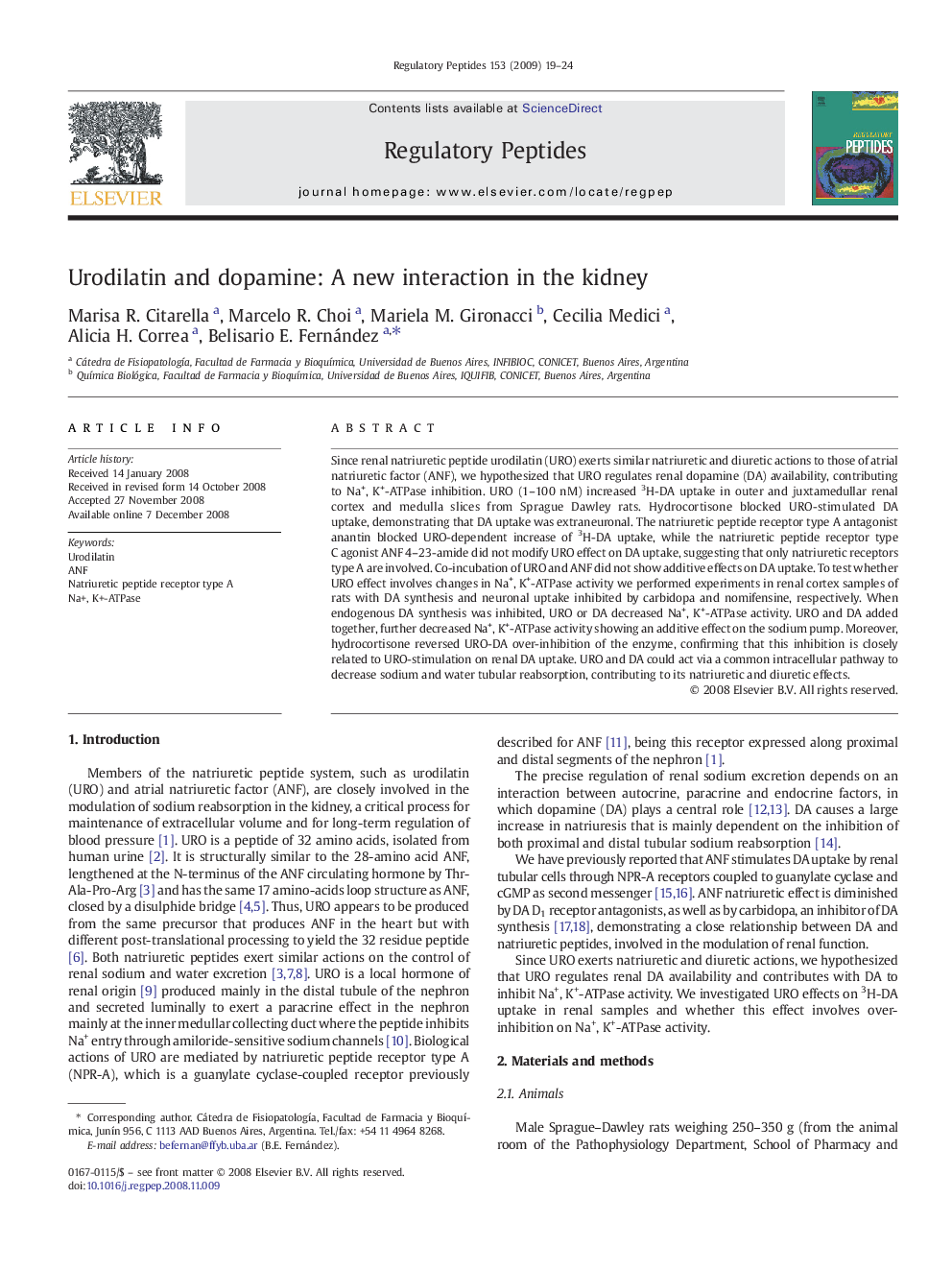| Article ID | Journal | Published Year | Pages | File Type |
|---|---|---|---|---|
| 2022902 | Regulatory Peptides | 2009 | 6 Pages |
Since renal natriuretic peptide urodilatin (URO) exerts similar natriuretic and diuretic actions to those of atrial natriuretic factor (ANF), we hypothesized that URO regulates renal dopamine (DA) availability, contributing to Na+, K+-ATPase inhibition. URO (1–100 nM) increased 3H-DA uptake in outer and juxtamedullar renal cortex and medulla slices from Sprague Dawley rats. Hydrocortisone blocked URO-stimulated DA uptake, demonstrating that DA uptake was extraneuronal. The natriuretic peptide receptor type A antagonist anantin blocked URO-dependent increase of 3H-DA uptake, while the natriuretic peptide receptor type C agonist ANF 4–23-amide did not modify URO effect on DA uptake, suggesting that only natriuretic receptors type A are involved. Co-incubation of URO and ANF did not show additive effects on DA uptake. To test whether URO effect involves changes in Na+, K+-ATPase activity we performed experiments in renal cortex samples of rats with DA synthesis and neuronal uptake inhibited by carbidopa and nomifensine, respectively. When endogenous DA synthesis was inhibited, URO or DA decreased Na+, K+-ATPase activity. URO and DA added together, further decreased Na+, K+-ATPase activity showing an additive effect on the sodium pump. Moreover, hydrocortisone reversed URO-DA over-inhibition of the enzyme, confirming that this inhibition is closely related to URO-stimulation on renal DA uptake. URO and DA could act via a common intracellular pathway to decrease sodium and water tubular reabsorption, contributing to its natriuretic and diuretic effects.
